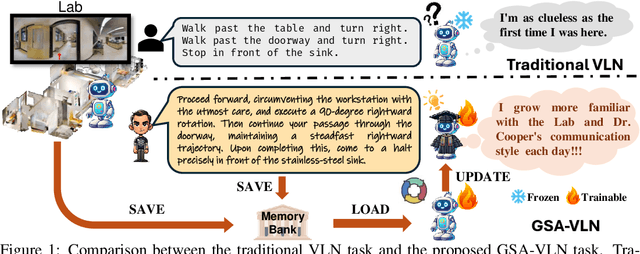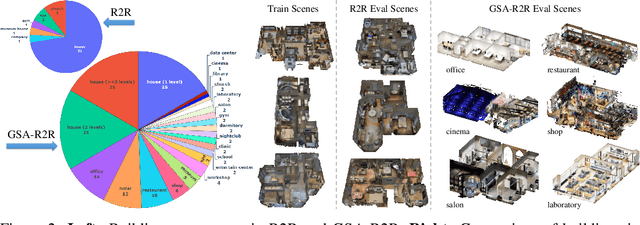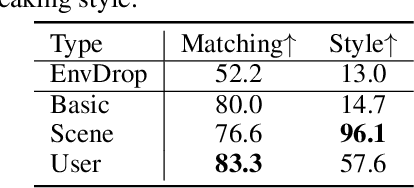Jiajun Liu
MARCO: A Cooperative Knowledge Transfer Framework for Personalized Cross-domain Recommendations
Oct 06, 2025Abstract:Recommender systems frequently encounter data sparsity issues, particularly when addressing cold-start scenarios involving new users or items. Multi-source cross-domain recommendation (CDR) addresses these challenges by transferring valuable knowledge from multiple source domains to enhance recommendations in a target domain. However, existing reinforcement learning (RL)-based CDR methods typically rely on a single-agent framework, leading to negative transfer issues caused by inconsistent domain contributions and inherent distributional discrepancies among source domains. To overcome these limitations, MARCO, a Multi-Agent Reinforcement Learning-based Cross-Domain recommendation framework, is proposed. It leverages cooperative multi-agent reinforcement learning, where each agent is dedicated to estimating the contribution from an individual source domain, effectively managing credit assignment and mitigating negative transfer. In addition, an entropy-based action diversity penalty is introduced to enhance policy expressiveness and stabilize training by encouraging diverse agents' joint actions. Extensive experiments across four benchmark datasets demonstrate MARCO's superior performance over state-of-the-art methods, highlighting its robustness and strong generalization capabilities. The code is at https://github.com/xiewilliams/MARCO.
Unlearning of Knowledge Graph Embedding via Preference Optimization
Jul 28, 2025Abstract:Existing knowledge graphs (KGs) inevitably contain outdated or erroneous knowledge that needs to be removed from knowledge graph embedding (KGE) models. To address this challenge, knowledge unlearning can be applied to eliminate specific information while preserving the integrity of the remaining knowledge in KGs. Existing unlearning methods can generally be categorized into exact unlearning and approximate unlearning. However, exact unlearning requires high training costs while approximate unlearning faces two issues when applied to KGs due to the inherent connectivity of triples: (1) It fails to fully remove targeted information, as forgetting triples can still be inferred from remaining ones. (2) It focuses on local data for specific removal, which weakens the remaining knowledge in the forgetting boundary. To address these issues, we propose GraphDPO, a novel approximate unlearning framework based on direct preference optimization (DPO). Firstly, to effectively remove forgetting triples, we reframe unlearning as a preference optimization problem, where the model is trained by DPO to prefer reconstructed alternatives over the original forgetting triples. This formulation penalizes reliance on forgettable knowledge, mitigating incomplete forgetting caused by KG connectivity. Moreover, we introduce an out-boundary sampling strategy to construct preference pairs with minimal semantic overlap, weakening the connection between forgetting and retained knowledge. Secondly, to preserve boundary knowledge, we introduce a boundary recall mechanism that replays and distills relevant information both within and across time steps. We construct eight unlearning datasets across four popular KGs with varying unlearning rates. Experiments show that GraphDPO outperforms state-of-the-art baselines by up to 10.1% in MRR_Avg and 14.0% in MRR_F1.
The Singapore Consensus on Global AI Safety Research Priorities
Jun 25, 2025Abstract:Rapidly improving AI capabilities and autonomy hold significant promise of transformation, but are also driving vigorous debate on how to ensure that AI is safe, i.e., trustworthy, reliable, and secure. Building a trusted ecosystem is therefore essential -- it helps people embrace AI with confidence and gives maximal space for innovation while avoiding backlash. The "2025 Singapore Conference on AI (SCAI): International Scientific Exchange on AI Safety" aimed to support research in this space by bringing together AI scientists across geographies to identify and synthesise research priorities in AI safety. This resulting report builds on the International AI Safety Report chaired by Yoshua Bengio and backed by 33 governments. By adopting a defence-in-depth model, this report organises AI safety research domains into three types: challenges with creating trustworthy AI systems (Development), challenges with evaluating their risks (Assessment), and challenges with monitoring and intervening after deployment (Control).
OneEval: Benchmarking LLM Knowledge-intensive Reasoning over Diverse Knowledge Bases
Jun 14, 2025Abstract:Large Language Models (LLMs) have demonstrated substantial progress on reasoning tasks involving unstructured text, yet their capabilities significantly deteriorate when reasoning requires integrating structured external knowledge such as knowledge graphs, code snippets, or formal logic. This limitation is partly due to the absence of benchmarks capable of systematically evaluating LLM performance across diverse structured knowledge modalities. To address this gap, we introduce \textbf{\textsc{OneEval}}, a comprehensive benchmark explicitly designed to assess the knowledge-intensive reasoning capabilities of LLMs across four structured knowledge modalities, unstructured text, knowledge graphs, code, and formal logic, and five critical domains (general knowledge, government, science, law, and programming). \textsc{OneEval} comprises 4,019 carefully curated instances and includes a challenging subset, \textsc{OneEval}\textsubscript{Hard}, consisting of 1,285 particularly difficult cases. Through extensive evaluation of 18 state-of-the-art open-source and proprietary LLMs, we establish three core findings: a) \emph{persistent limitations in structured reasoning}, with even the strongest model achieving only 32.2\% accuracy on \textsc{OneEval}\textsubscript{Hard}; b) \emph{performance consistently declines as the structural complexity of the knowledge base increases}, with accuracy dropping sharply from 53\% (textual reasoning) to 25\% (formal logic); and c) \emph{diminishing returns from extended reasoning chains}, highlighting the critical need for models to adapt reasoning depth appropriately to task complexity. We release the \textsc{OneEval} datasets, evaluation scripts, and baseline results publicly, accompanied by a leaderboard to facilitate ongoing advancements in structured knowledge reasoning.
Chain-of-Action: Trajectory Autoregressive Modeling for Robotic Manipulation
Jun 11, 2025Abstract:We present Chain-of-Action (CoA), a novel visuo-motor policy paradigm built upon Trajectory Autoregressive Modeling. Unlike conventional approaches that predict next step action(s) forward, CoA generates an entire trajectory by explicit backward reasoning with task-specific goals through an action-level Chain-of-Thought (CoT) process. This process is unified within a single autoregressive structure: (1) the first token corresponds to a stable keyframe action that encodes the task-specific goals; and (2) subsequent action tokens are generated autoregressively, conditioned on the initial keyframe and previously predicted actions. This backward action reasoning enforces a global-to-local structure, allowing each local action to be tightly constrained by the final goal. To further realize the action reasoning structure, CoA incorporates four complementary designs: continuous action token representation; dynamic stopping for variable-length trajectory generation; reverse temporal ensemble; and multi-token prediction to balance action chunk modeling with global structure. As a result, CoA gives strong spatial generalization capabilities while preserving the flexibility and simplicity of a visuo-motor policy. Empirically, we observe CoA achieves the state-of-the-art performance across 60 RLBench tasks and 8 real-world manipulation tasks.
RePaViT: Scalable Vision Transformer Acceleration via Structural Reparameterization on Feedforward Network Layers
May 28, 2025Abstract:We reveal that feedforward network (FFN) layers, rather than attention layers, are the primary contributors to Vision Transformer (ViT) inference latency, with their impact signifying as model size increases. This finding highlights a critical opportunity for optimizing the efficiency of large-scale ViTs by focusing on FFN layers. In this work, we propose a novel channel idle mechanism that facilitates post-training structural reparameterization for efficient FFN layers during testing. Specifically, a set of feature channels remains idle and bypasses the nonlinear activation function in each FFN layer, thereby forming a linear pathway that enables structural reparameterization during inference. This mechanism results in a family of ReParameterizable Vision Transformers (RePaViTs), which achieve remarkable latency reductions with acceptable sacrifices (sometimes gains) in accuracy across various ViTs. The benefits of our method scale consistently with model sizes, demonstrating greater speed improvements and progressively narrowing accuracy gaps or even higher accuracies on larger models. In particular, RePa-ViT-Large and RePa-ViT-Huge enjoy 66.8% and 68.7% speed-ups with +1.7% and +1.1% higher top-1 accuracies under the same training strategy, respectively. RePaViT is the first to employ structural reparameterization on FFN layers to expedite ViTs to our best knowledge, and we believe that it represents an auspicious direction for efficient ViTs. Source code is available at https://github.com/Ackesnal/RePaViT.
DARLR: Dual-Agent Offline Reinforcement Learning for Recommender Systems with Dynamic Reward
May 12, 2025Abstract:Model-based offline reinforcement learning (RL) has emerged as a promising approach for recommender systems, enabling effective policy learning by interacting with frozen world models. However, the reward functions in these world models, trained on sparse offline logs, often suffer from inaccuracies. Specifically, existing methods face two major limitations in addressing this challenge: (1) deterministic use of reward functions as static look-up tables, which propagates inaccuracies during policy learning, and (2) static uncertainty designs that fail to effectively capture decision risks and mitigate the impact of these inaccuracies. In this work, a dual-agent framework, DARLR, is proposed to dynamically update world models to enhance recommendation policies. To achieve this, a \textbf{\textit{selector}} is introduced to identify reference users by balancing similarity and diversity so that the \textbf{\textit{recommender}} can aggregate information from these users and iteratively refine reward estimations for dynamic reward shaping. Further, the statistical features of the selected users guide the dynamic adaptation of an uncertainty penalty to better align with evolving recommendation requirements. Extensive experiments on four benchmark datasets demonstrate the superior performance of DARLR, validating its effectiveness. The code is available at https://github.com/ArronDZhang/DARLR.
SE4Lip: Speech-Lip Encoder for Talking Head Synthesis to Solve Phoneme-Viseme Alignment Ambiguity
Apr 08, 2025Abstract:Speech-driven talking head synthesis tasks commonly use general acoustic features (such as HuBERT and DeepSpeech) as guided speech features. However, we discovered that these features suffer from phoneme-viseme alignment ambiguity, which refers to the uncertainty and imprecision in matching phonemes (speech) with visemes (lip). To address this issue, we propose the Speech Encoder for Lip (SE4Lip) to encode lip features from speech directly, aligning speech and lip features in the joint embedding space by a cross-modal alignment framework. The STFT spectrogram with the GRU-based model is designed in SE4Lip to preserve the fine-grained speech features. Experimental results show that SE4Lip achieves state-of-the-art performance in both NeRF and 3DGS rendering models. Its lip sync accuracy improves by 13.7% and 14.2% compared to the best baseline and produces results close to the ground truth videos.
A Flexible FBG-Based Contact Force Sensor for Robotic Gripping Systems
Feb 06, 2025Abstract:Soft robotic grippers demonstrate great potential for gently and safely handling objects; however, their full potential for executing precise and secure grasping has been limited by the lack of integrated sensors, leading to problems such as slippage and excessive force exertion. To address this challenge, we present a small and highly sensitive Fiber Bragg Grating-based force sensor designed for accurate contact force measurement. The flexible force sensor comprises a 3D-printed TPU casing with a small bump and uvula structure, a dual FBG array, and a protective tube. A series of tests have been conducted to evaluate the effectiveness of the proposed force sensor, including force calibration, repeatability test, hysteresis study, force measurement comparison, and temperature calibration and compensation tests. The results demonstrated good repeatability, with a force measurement range of 4.69 N, a high sensitivity of approximately 1169.04 pm/N, a root mean square error (RMSE) of 0.12 N, and a maximum hysteresis of 4.83%. When compared to a commercial load cell, the sensor showed a percentage error of 2.56% and an RMSE of 0.14 N. Besides, the proposed sensor validated its temperature compensation effectiveness, with a force RMSE of 0.01 N over a temperature change of 11 Celsius degree. The sensor was integrated with a soft grow-and-twine gripper to monitor interaction forces between different objects and the robotic gripper. Closed-loop force control was applied during automated pick-and-place tasks and significantly improved gripping stability, as demonstrated in tests. This force sensor can be used across manufacturing, agriculture, healthcare (like prosthetic hands), logistics, and packaging, to provide situation awareness and higher operational efficiency.
General Scene Adaptation for Vision-and-Language Navigation
Jan 29, 2025



Abstract:Vision-and-Language Navigation (VLN) tasks mainly evaluate agents based on one-time execution of individual instructions across multiple environments, aiming to develop agents capable of functioning in any environment in a zero-shot manner. However, real-world navigation robots often operate in persistent environments with relatively consistent physical layouts, visual observations, and language styles from instructors. Such a gap in the task setting presents an opportunity to improve VLN agents by incorporating continuous adaptation to specific environments. To better reflect these real-world conditions, we introduce GSA-VLN, a novel task requiring agents to execute navigation instructions within a specific scene and simultaneously adapt to it for improved performance over time. To evaluate the proposed task, one has to address two challenges in existing VLN datasets: the lack of OOD data, and the limited number and style diversity of instructions for each scene. Therefore, we propose a new dataset, GSA-R2R, which significantly expands the diversity and quantity of environments and instructions for the R2R dataset to evaluate agent adaptability in both ID and OOD contexts. Furthermore, we design a three-stage instruction orchestration pipeline that leverages LLMs to refine speaker-generated instructions and apply role-playing techniques to rephrase instructions into different speaking styles. This is motivated by the observation that each individual user often has consistent signatures or preferences in their instructions. We conducted extensive experiments on GSA-R2R to thoroughly evaluate our dataset and benchmark various methods. Based on our findings, we propose a novel method, GR-DUET, which incorporates memory-based navigation graphs with an environment-specific training strategy, achieving state-of-the-art results on all GSA-R2R splits.
 Add to Chrome
Add to Chrome Add to Firefox
Add to Firefox Add to Edge
Add to Edge